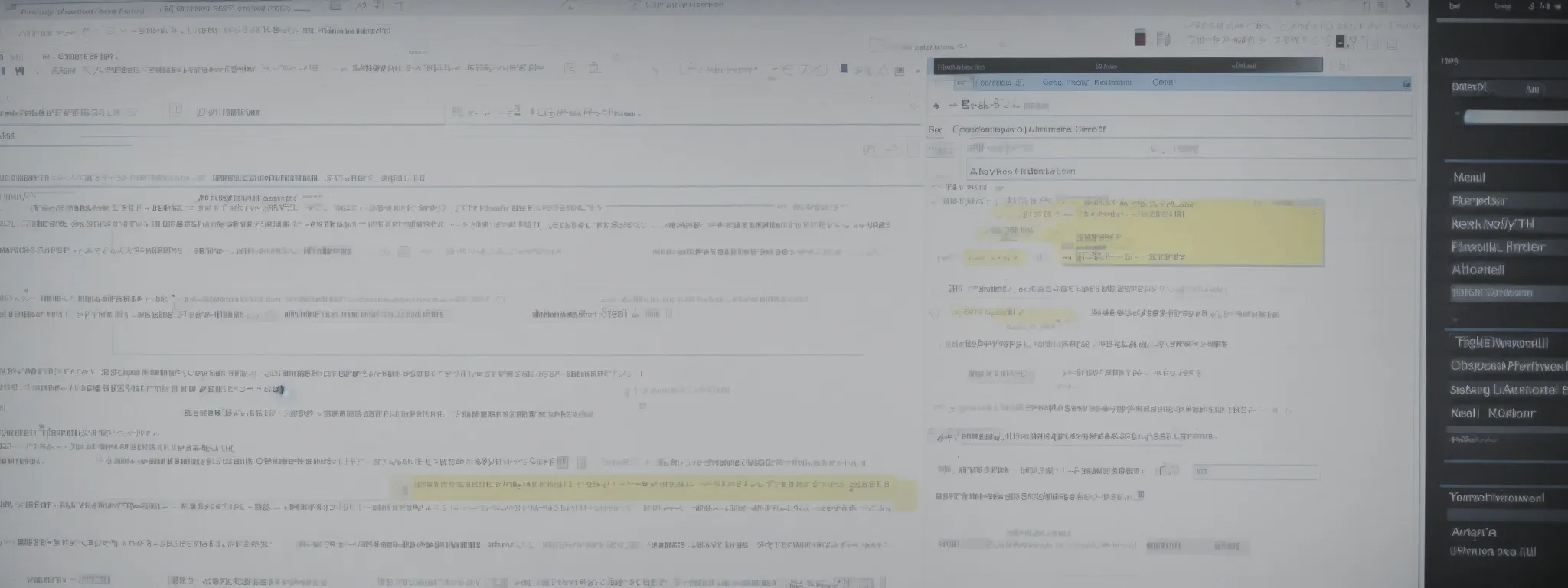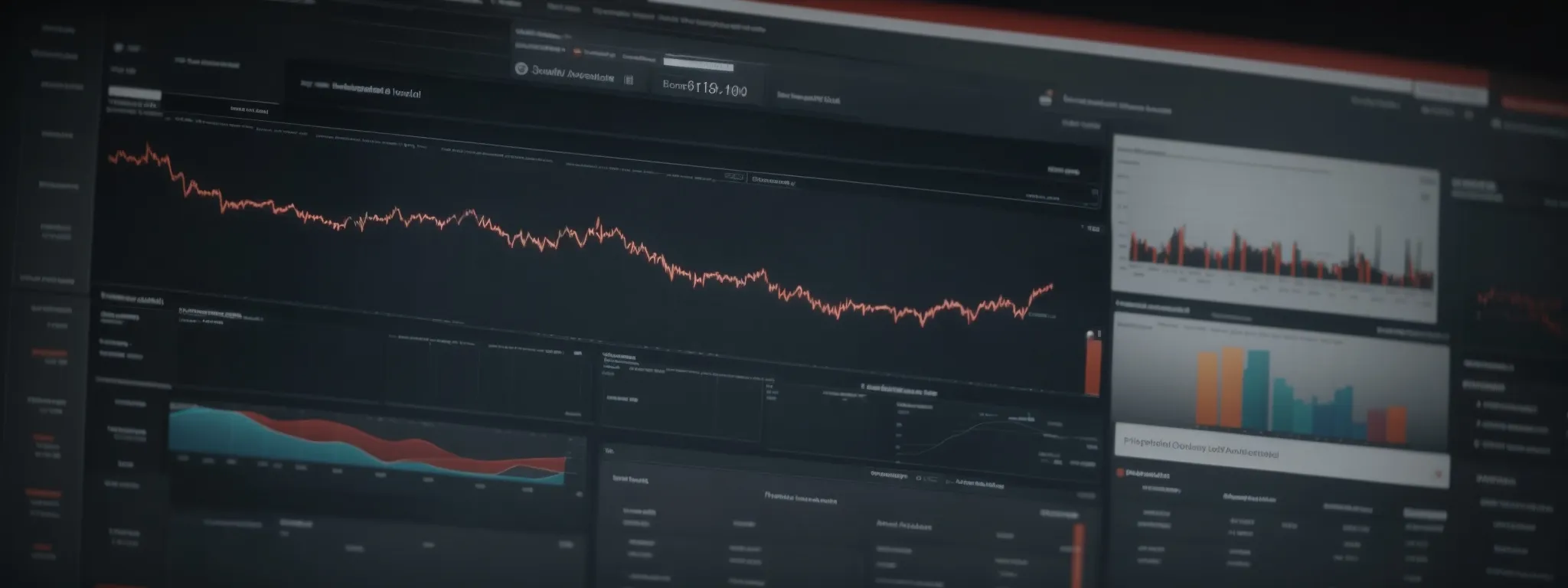The Power of SEO Header Tags: Key Techniques for Success
Maximizing Your Website’s Potential With Effective SEO Header Tags In the bustling digital marketplace, the efficacy of your website’s header tags can significantly influence its visibility and […]
Maximizing Your Website’s Potential With Effective SEO Header Tags
In the bustling digital marketplace, the efficacy of your website’s header tags can significantly influence its visibility and user engagement.
These HTML elements, ranging from H1 to H6, act as signposts, guiding both readers and search engines through the content’s hierarchy, directly impacting search engine results page (SERP) rankings.
When thoughtfully integrated with SEO best practices, these tags not only enhance readability but also signal relevance to target keywords, thereby fortifying the foundation of a robust SEO strategy.
For webmasters and marketers eager to refine their online presence, mastery of header tags is not just recommended; it’s imperative.
Keep reading to navigate the nuances of SEO-friendly header tags and how to amplify their impact on your site’s SEO performance.
Key Takeaways
- Header Tags From H1 to H6 Are Critical for SEO and User Navigation, With Strategic Use Enhancing Content Hierarchy and Search Engine Understanding
- Keyword Integration Into Header Tags Should Be Organic and Align With User Search Intent, Balancing SEO Needs With Readable Content
- Regular a/B Testing and Analysis of Header Tag Performance Can Lead to Increased User Engagement and Improved Click-Through Rates
- Over-Optimization of Header Tags With Excessive Keywords Can Harm User Experience and Search Engine Credibility; Balance Is Key
- LinkGraph’s Success Stories Demonstrate Tangible SEO Improvements Through Strategic Header Tag Restructuring and Optimization
Understanding the Basics of SEO Header Tags

Within the realm of Search Engine Optimization, header tags hold significant value for both users and search engines.
While often overlooked, these HTML tags—from H1 through H6—serve as a fundamental component of SEO best practices, influencing how content is structured and consumed.
Header tags, as an integral part of HTML5 document outlining, not only guide readers through a web page’s hierarchy but also facilitate search engines in understanding the topical depth and relevance of content.
Mastering the utilization of these HTML elements is crucial for marketers intent on optimizing their web pages to garner maximum visibility in the search engine results pages (SERPs) and cater to the searcher’s intent.
What Header Tags Are and Their Importance
SEO header tags, which span from H1 to H6, are more than just formatting tools for webmasters; they are pivotal in clarifying the structure of a web page’s content to search engine algorithms. The correct implementation of these tags can substantially boost a page’s SEO performance, ensuring that each header content aligns with intended search intent and keyword focus.
Deploying headers effectively both supports the visual clarity for visitors and enhances the hierarchical classification of information, which is essential for search engines. Notably, the H1 tag is often associated with the main topic or post title, acting as a beacon for search engine crawlers to identify and index the primary subject matter swiftly, setting the scene for subsequent SEO efforts.
The Role of Header Tags in SEO
Effective header tags function as a roadmap for both search engines and users, enabling a smoother navigation experience and a clearer understanding of the page’s content hierarchy. Proper use of heading tags can directly impact a website’s SERP rankings; these HTML elements signal to search engines the relative importance and context of the content within a page.
Search engines, like the meticulous librarians of the web, utilize header tags to index content more efficiently. When content creators employ heading tags to highlight the structured layers of their work, search engines reward their clarity and organization with better visibility:
| Header Tag | Function | Importance in SEO |
|---|---|---|
| H1 | Primary subject identifier | Essential for topic relevance |
| H2 – H6 | Subtopic and supporting content delineation | Facilitates content hierarchy recognition |
How Search Engines Interpret Header Tags
When delving into the mechanics of SEO, understanding the interpretation of header tags by search engines proves indispensable. These HTML header tags serve as signals that alert algorithms to a web page’s main topics and subtopics, enabling spiders to crawl and index content in an organized manner.
Employing a strategic approach to header tag usage, webmasters can influence the weight search engines attribute to certain portions of content. The correct application of H1 through H6 tags is critical for aligning a page’s content with user queries, thus improving the site’s overall search engine results page performance.
Implementing H1 Tags to Capture Attention

In the digital landscape, where competition for visibility is relentless, the potency of an H1 tag on a web page cannot be overstated.
As the vanguard of on-page SEO, it is pivotal that webmasters craft H1 tags with precision—leveraging this HTML element not only to captivate a visitor’s attention but also to cement the relevancy for search engines.
Delving into the art of optimizing H1 tags is akin to unlocking a gateway to enhanced SEO performance; hence, understanding its significance, deploying it judiciously, and sidestepping common pitfalls is indispensable for securing a foothold at the summit of the SERPs.
Crafting Effective H1 Tags for SEO
Mastering the H1 tag begins with a keen focus on relevance and conciseness. The optimal H1 heading encapsulates the essence of the page content, brimming with the target keyword to satisfy both the searcher’s query and the search engine’s criteria for topic relevance.
Incorporation of the target keyword within the H1 tag should never compromise the readability or the user experience. This header tag, visible to users upon landing on the web page, must promise a value that the subsequent content fulfills, thus setting a professional and trustworthy tone from the very first glance.
| Element of Effective H1 Tags | Detail |
|---|---|
| Relevance | Directly reflects the main topic of the page |
| Keyword Inclusion | Includes target keyword without sacrificing clarity |
| User Experience | Engages visitors, forecasting the page content accurately |
The Significance of the H1 Tag on Your Page
The H1 tag holds a pivotal role in the perception and performance of a web page. Regarded as the most crucial HTML header, it acts as the frontispiece that commands immediate attention from both visitors and search engine crawlers.
An effectively crafted H1 tag is invaluable as it delivers an instant prelude to the page’s content, succinctly encapsulating its core theme and enticing further engagement from the reader:
| Feature | Brief |
|---|---|
| Engagement | The first element drawing reader focus, setting expectations for the content |
| SEO Impact | A strategically optimized H1 boosts the page’s visibility and indexation prospects |
Its strategic placement and optimization are defining factors in influencing a site’s organic ranking and user engagement metrics, thereby cementing the H1 tag as an indispensable asset within the arsenal of on-page SEO tactics.
Common Mistakes to Avoid With H1 Tags
One frequent misstep in crafting H1 tags is neglecting their uniqueness for each page. Duplicate H1 tags across various pages create confusion for search engines and dilute the effectiveness of an SEO strategy, as each page should distinctly highlight its own subject matter and value proposition:
- Ensure every H1 tag is unique to the page it resides on.
- Align H1 tags with the specific content and keywords of their web page.
- Avoid vague or generic text that does little to describe the page’s content.
Another error is overloading an H1 tag with keywords to the point where it loses coherence and disrupts user experience. While keywords play a role in optimization, readability and relevance must take precedence to engage and retain visitors while also satisfying search engine algorithms.
Utilizing H2 Tags to Improve User Experience

In the endeavor to elevate a website’s user experience, H2 tags emerge as a powerful tool in the Content Strategy arsenal.
They serve a dual purpose: organizing content effectively for ease of reading and signaling to search engines the structure within a page.
By breaking up text into digestible sections and crafting descriptive subheaders, site owners can captivate their audience and reinforce the relevance of their content in the eyes of search engine algorithms.
This strategic use of H2 tags is a subtle yet critical component in the optimization of a website’s hierarchy and readability.
The Function of H2 Tags in Organizing Content
The functional prowess of H2 tags transcends mere aesthetics; it is intrinsically tied to the organization and comprehension of the webpage’s content. These secondary heading tags delineate subsections, providing a clear demarcation that aids visitors in navigating the narrative landscape of the site with ease and precision.
Strategic placement of H2 tags serves as signposts throughout the digital journey, guiding users from one topic to another. Their role as organizational beacons ensures readers can scan content effectively and find the information they seek without unnecessary complexity:
| Section of Content | Function of H2 Tag |
|---|---|
| Introduction | Introduces main concepts and sets the stage for deeper exploration |
| Subsection Discussions | Highlights specific topics, allowing for a structured flow of arguments |
| Conclusion | Summarizes the key points and reiterates the page’s central message |
How to Use H2 Tags to Break Up Text
Breaking up text with H2 tags not only garners the appreciation of visitors but also streamlines the user’s journey across a page. By incorporating meaningful H2 subheaders that hinge upon the target keyword, creators impart clarity and direct readers toward the information that aligns with their search intent.
Markers of transition, H2 tags operate as thematic signifiers that segment content into accessible compartments, enhancing engagement by preventing the overbearing wall-of-text effect. Judicious use of H2 headers can significantly uplift the user experience, inviting a more interactive and informative navigation through the layered information.
Tips for Writing Descriptive H2 Tags
Ensuring that H2 tags capture the essence of ensuing sections hinges on precise yet compelling language. A descriptive H2 draws the user deeper into the content, promising new insights and maintaining the flow of engagement through natural progression that aligns with the meticulous structure of underlying HTML code.
Optimization of H2 tags involves more than aesthetics; it is imperative they reflect the content’s intent and user queries. Achieving this entails a balance between incorporating target keywords and sustaining an organic, readable context, woven expertly into each H2 to uphold Search Engine Optimization integrity and user involvement.
Enhancing Content Structure With H3 to H6 Tags

Subheadings are the scaffolding of a well-structured web page, rendering complex information digestible and ensuring a seamless user experience.
Beyond the pivotal H1 and H2 tags, the judicious implementation of H3 to H6 tags can significantly bolster both readability and SEO by establishing a clear, hierarchical content structure.
As webmasters and content creators delve into strategies for header tag placement, understanding how to leverage the nuanced layers of H3 to H6 headers becomes a refined skill, marking the difference between good and exceptional content optimization.
The upcoming discussion will shed light on the intricacies of these lesser-discussed but equally important HTML elements, offering insight into best practices, strategic placement, and the role they play in enhancing a website’s communicative clarity.
How Subheadings Enhance Readability and SEO
Subheadings from H3 to H6 perform more than an aesthetic function; they substantially upgrade the readability and navigational experience of a website. They clarify complex ideas into digestible formats while also allowing the search engine to understand content layers, directly benefiting SEO metrics.
Through strategic subheading implementation, a page’s textual landscape becomes effortless to traverse, underpinning user engagement and the potential for a higher search engine ranking. These subheadings work in concert with the overall SEO framework, providing organized touchpoints that resonate with both the algorithm’s logic and the user’s search needs.
Best Practices for Using H3 to H6 Tags
Adopting a coherent approach to H3 to H6 tags is vital for forging a content hierarchy that is as logical as it is beneficial for SEO. These tags serve to fine-tune the granularity of information, allowing creators to draw attention to secondary points and details that support the overarching theme encapsulated by H1 and H2 tags.
When utilizing H3 to H6 tags, webmasters should ensure these HTML elements contribute meaningfully to the narrative flow of the page. Such tags should encapsulate key points or queries related to the section they introduce, enhancing the web page’s comprehensiveness and serving as anchor points that further search engines’ understanding of the content’s structure.
Strategies for Hierarchical Header Tag Placement
Applying a methodical approach to header tag placement proves fundamental in demarcating a webpage’s structure and enhancing its readability. To accomplish this, creators must judiciously assign H3 to H6 tags to subsidiary ideas, providing a descending level of emphasis that outlines the narrative in clear, manageable layers.
While the H1 and H2 headers set the stage, the strategic use of lower-level headers carves out a network of signposts, guiding the user’s journey through the underlying content with precision. Placement of these headers should intuitively follow the content’s natural progression, ensuring that each segment is distinctly flagged and easily navigable.
Optimizing Your Header Tags With Keyword Integration

In the dynamic realm of search engine optimization, the artful infusion of keywords within header tags critically shapes the discoverability and ranking of a website.
This section explores the nuanced strategies of embedding keywords into headers, examining their relevance and optimal density to strike a harmonious balance between bolstering SEO prowess and maintaining readability.
As stakeholders embark on this intricate aspect of content optimization, they must carefully navigate the interplay between keyword use in header tags and the natural flow of text, ensuring that each header tag seamlessly marries the imperatives of search engine algorithms with the informational needs of the reader.
Strategies for Including Keywords in Header Tags
Integrating keywords into header tags is a subtle art that requires a strategic approach. In tailoring headers, LinkGraph suggests that webmasters focus on incorporating relevant keywords in a manner that feels organic and aligns with the user’s search intent. This enhances the probability of matching user queries, thereby elevating a page’s stance in SERPs without compromising the content’s narrative quality.
One of LinkGraph’s insights for optimizing keyword placement within headers emphasizes specificity and context. By embedding keywords that reflect both the broader topic and the more focused subtopics covered in H2, H3, or subsequent tags, a website effectively communicates its content’s breadth and depth to search engines, thereby improving topical relevance and authority in a given domain.
Understanding Keyword Relevance and Density
Grasping the concept of keyword relevance within the context of header tags, LinkGraph explicates that synchronizing targeted keywords with the central theme of a web page is vital. It’s a delicate calibration, as overemphasis on certain terms may disrupt the natural discourse, while scant usage may curtail a website’s potential to resonate with pertinent searches.
An understanding of keyword density further refines the efficient use of header tags. Here, LinkGraph advises against an excessive concentration of keywords, which can appear forced and undermine the user experience. Instead, a restrained and strategic placement within header tags ensures that content remains engaging and accessible while optimized for search engine algorithms.
The Balance Between SEO and Readability in Headers
Striking the perfect equilibrium between search engine optimization and readability demands precision; headers must not only entice with clarity for users but simultaneously cater to search engines. LinkGraph consistently underscores the importance of meticulously crafted header tags that are embedded with carefully selected keywords, ensuring that the page resonates with search queries while preserving an undisturbed reader experience.
The interspersion of keywords in headers is a dance of subtlety and strategy: the objective is to seamlessly blend SEO requirements without jarring the visitor’s reading flow. Finessing this balance, LinkGraph orchestrates header tag deployment to maximize visibility on the SERPs yet upholds the narrative’s inherent readability, delivering a smoother, compelling journey for the reader:
| SEO Consideration | Reader Experience | LinkGraph’s Approach |
|---|---|---|
| Keyword optimization in headers | Engaging, clear narrative flow | Strategic keyword integration without impeding readability |
| Weighting of H1, H2 tags | Logical content structuring for ease of consumption | Enhanced search visibility with reader-centric organization |
Improving Click-Through Rates With Compelling Header Tags

Securing a coveted spot on search engine results pages is only half the battle; engaging header tags play a pivotal role in transforming SERP presence into tangible user engagement and click-through rates.
With the right execution, header tags have the power to spark interest, beckoning visitors to delve into a website’s depths.
In the following exploration, we dissect techniques for creating header tags that capture attention, methods for assessing their performance, and the impact of A/B testing on fine-tuning these critical SEO elements for amplified engagement.
Writing Header Tags That Spark Interest
In the intricate ballet of on-page SEO, the lure of adeptly crafted header tags cannot be underestimated: they serve as the initial handshake extended towards a potential site visitor. LinkGraph emphasizes that the real prowess of a header tag lies in its capacity to pique interest even before the user clicks through, ensuring that the title sets forth the promise of value within the content that awaits.
These header tags, when composed with thoughtfulness, serve as a beacon in the crowded SERPs, guiding users to the information they seek. Crafting headers that resonate with the target audience’s inquiries compels intrigue and propels click-through rates, signifying the importance of matching the punch of an offstage whisper with the clarity of an onstage shout.
| Element of Interest | Role in Engagement | Impact on Click-Through Rate |
|---|---|---|
| Resonance with User Queries | Directly addresses the searcher’s intent | Increase in user involvement and website visits |
| Title Clarity and Creativity | Captivates attention, differentiating in SERPs | Boost in perceived value, higher selection probability |
| Promise of Value | Forecasts the depth and usefulness of content | Encouragement of user engagement and page exploration |
Analyzing the Performance of Your Header Tags
An impartial evaluation of header tags plays a pivotal role in refining the strategy to enhance click-through rates. LinkGraph asserts that by analyzing metrics such as user engagement and dwell time, webmasters gain insights into the effectiveness of their header tags in capturing and retaining user interest.
Essential to this analytical process is the utilization of A/B testing, where variations of header tags can be pitted against one another to determine which resonate more robustly with the target audience. This data-driven approach provided by LinkGraph allows for iterative improvements and precision in crafting header content that aligns seamlessly with the overarching SEO goals of a website.
A/B Testing Your Header Tags for Better Engagement
A/B testing stands as a cornerstone within LinkGraph’s methodical approach to enhancing website engagement through header tag optimization. This empirical technique pits two variations of header tags against each other to meticulously discern which generates superior user engagement and click-through rates.
By employing A/B testing, LinkGraph aids clients in identifying header tags that not only adhere to SEO best practices but also resonate more profoundly with their audience. The data gleaned from such tests drives informed decisions, leading to the fine-tuning of header tags that serve as compelling invitations to users, thereby optimizing click-through rates.
Mastering the Art of SEO-Friendly Header Tags

Embarking on the journey to harness the power of SEO-friendly header tags is an essential step toward amplifying a website’s visibility and user engagement.
Recognizing that header tags do more than frame text, they embody the strategic essence of a content’s purpose and contribute significantly to a comprehensive SEO strategy.
As such, they require not a set-and-forget mentality but a dynamic and ongoing refinement process.
Through the meticulous creation, regular evaluation, and continual optimization of header tags, site owners and marketers can transform a simple structural element into a potent tool for communicating content’s purpose, emphasizing its value, and securing a favorable digital reception.
Creating Headers That Reflect Your Content’s Purpose
Crafting header tags that encapsulate your content’s purpose demands a precise articulation of core themes. LinkGraph supports this endeavor with its suite of SEO services, ensuring that the header tags, notably the H1 representing the core subject, explicitly mirror the main aim and contributions of the website’s content.
- Pinpointing the core message.
- Formulating an accurate and enticing header.
- Enhancing the content’s accessibility for users and search engines.
LinkGraph’s meticulous approach leads to headers that not only optimize a page for search engines but also resonate with the target audience. Their On-Page SEO Services ensure that each title tag, H1, and subheader present a clear and concise narrative that advances the user’s understanding and feeds into the broader SEO strategy seamlessly.
Header Tags as Part of Your Overall SEO Strategy
Integrating header tags into an overarching SEO strategy is not merely an act of formatting but a calculated maneuver within LinkGraph’s comprehensive approach to enhancing digital presence. Recognizing that website structure and content clarity are pivotal for search engines, deploying header tags effectively can lead to a robust framework, facilitating discernment of a site’s thematic architecture and establishing a clear pathway for indexing.
LinkGraph’s methodology encompasses a thorough analysis of header tag efficacy, ensuring that H1 through H6 tags are not isolated elements but integrated components that bolster user engagement and search engine recognition. This holistic approach to header tags is essential in constructing a cohesive and user-centric experience, ultimately propelling a website’s content to the front lines of search engine results pages.
Regularly Updating and Refining Your Header Tags
Maintaining the relevance and effectiveness of header tags necessitates periodic reviews and updates. As the digital landscape evolves with new search patterns and algorithms, revisiting and refining these HTML elements ensures that a website remains competitive and aligned with the latest SEO best practices.
The curation process for header tags should reflect an ongoing commitment to SEO excellence:
- Analyze user engagement metrics to gauge header effectiveness.
- Refine headers based on data insights to enhance search alignment.
- Update headers to respond to changing content strategies and market trends.
Avoiding Common Pitfalls in Header Tag Optimization

Navigating the intricacies of SEO header tags is critical for bolstering a website’s prominence in search engine listings, yet common missteps in their application can hinder a site’s performance.
Adept webmasters engage not only in pinpointing and amending header tag issues but also in circumventing the hazards of over-optimization and maintaining pace with evolving header tag SEO best practices.
As the digital terrain shifts, these continuous efforts in optimizing header tags prove indispensable in maximizing a website’s allure and search engine ranking potential.
Identifying and Fixing Header Tag Issues
Discernment in the realm of SEO header tags requires vigilant monitoring and prompt rectification of issues. LinkGraph’s specialized services streamline this process, employing comprehensive SEO Audits that pinpoint discrepancies in header tag deployment, from instances of duplication to H1 tag omissions, which could otherwise impede search engine indexing and user navigation.
Rectifying header tag problems is an intricate element of LinkGraph’s SEO services. By methodically adjusting header tag structure and keyword incorporation, they ensure that tags not only conform to SEO guidelines but also enhance the coherence of on-page content, paving the way for optimized search engine visibility and a refined user experience.
Overcoming Over-Optimization in Header Tags
In the quest for SEO supremacy, it is easy for marketers to fall into the trap of over-optimizing header tags, which can be as detrimental as neglecting optimization altogether. LinkGraph counsels website owners to apply a discerning eye, ensuring that header tags are purposefully crafted to serve the content’s topical integrity, rather than being stuffed with an excess of keywords which disrupt the user’s journey.
Striking a balance in header tag optimization is crucial to maintain a website’s credibility with both search engines and visitors. LinkGraph’s holistic SEO strategies embody this equilibrium, emphasizing the importance of header tags that are relevant and contextually rich, instead of relying on forced keyword insertion that could trigger search engine penalties and degrade the reader’s experience.
Staying Updated With SEO Best Practices for Headers
Remaining attuned to the evolving guidelines of search engine optimization ensures the tactical use of header tags aligns with cutting-edge practices. LinkGraph’s dedication to continual learning and application of fresh, algorithm-driven strategies informs their client’s optimization efforts, equipping them with knowledge to finetune header structures for prime search engine recognition.
LinkGraph’s expertise in monitoring and adapting to SEO shifts empowers the modern marketer with nuanced, actionable insights into header tag usage. As search engines refine how they parse page hierarchies, LinkGraph provides astute recommendations, ensuring that every header tag—from the H1 to the H6—is optimized for peak performance amidst the changing SEO landscape.
Tracking the Impact of Header Tags on SEO Performance

In a digital realm where every HTML element is scrutinized for SEO efficacy, header tags command substantial influence over a website’s search engine performance.
Recognizing the gravity of this function, industry professionals deploy advanced tools and meticulously track metrics to assess the efficiency of header tag use.
By leveraging data at the intersection of science and strategy, LinkGraph assists clients in making informed decisions that refine header strategy, driving meaningful improvements in their digital presence.
The lessons gleaned from successful case studies provide a blueprint for optimizing header tags, illustrating the transformative power of this often-underestimated facet of on-page SEO.
Tools and Metrics for Measuring Header Tag Efficiency
The analytical prowess of LinkGraph’s Search Atlas suite equips webmasters with advanced tools to ascertain the effect of header tags on SEO performance. Through deep-dive analytics, including page views, search rankings, and user behavior patterns, marketers obtain granular insights into how effectively their header tags are driving traffic and engagement.
Metrics such as click-through rate (CTR) from SERPs and time spent on page stand as testament to the effectiveness of well-formulated header tags. By correlating these indicators with changes in header tag strategy, LinkGraph enables clients to iteratively refine their approach, ensuring header tags contribute to both enhanced search engine rankings and improved user experiences.
Making Data-Driven Decisions to Adjust Header Strategy
In the arena of SEO, the agility to pivot header strategy based on empirical evidence is what sets LinkGraph apart. Tailored Search Atlas analytics enable site owners to see the direct relationship between strategic header tweaks and SEO outcomes, empowering them to make adjustments that align precisely with the ever-evolving demands of search engine algorithms and user behavior.
LinkGraph’s dedication to data-driven insight offers an informed pathway to optimize header tags, maximizing a website’s digital resonance. By analyzing performance metrics, LinkGraph assists in honing header strategies, facilitating a website to realize its full potential in organic search visibility and engagement.
Case Studies: Successful Header Tag Optimization Examples
LinkGraph’s comprehensive application of SEO best practices is vividly illustrated through their client success stories involving header tag optimizations. One such case study highlighted a client’s 47% boost in organic traffic following a systematic restructuring of header tags that more accurately reflected content hierarchy and incorporated strategic keyword phrases.
- Identification of underperforming header tags through meticulous SEO audits.
- Strategic restructuring and keyword enhancement of H1 to H6 tags.
- Subsequent 47% increase in organic traffic as a direct result of optimization efforts.
Another compelling example within LinkGraph’s case studies revealed how a simple yet calculated reformation of H1 and H2 tags on a client’s homepage produced a notable uptick in search visibility, culminating in a 32% rise in click-through rates from the search engine results page.
Frequently Asked Questions
Why are SEO header tags important for improving website visibility in search engines?
SEO header tags are pivotal for enhancing a website’s visibility because they help search engines understand the structure and content of a web page, allowing for a more accurate presentation in SERPs. By clearly defining the hierarchy of the content, header tags, such as the h1 through h6, also improve user experience, which is a critical factor in search engine ranking algorithms.
How can H1 tags be used effectively to capture the attention of users and search engines?
H1 tags serve as a prominent beacon for both users and search engines, signaling the core subject of a web page; they must, therefore, encapsulate the main idea succinctly and engagingly. To leverage H1 tags effectively, one must infuse them with the target keyword and ensure they align with the user’s search intent, thus guaranteeing their appeal transcends mere visibility, enhancing both relevance and click-through rates.
What are the benefits of utilizing H2 tags for enhancing the user experience on a web page?
H2 tags serve a pivotal role in improving user experience on a web page by structuring content into digestible sections, which facilitates quicker navigation and enhances the reader’s comprehension of the material. Additionally, these header tags contribute to SEO as they allow search engines to understand the relevance and hierarchy of information, thereby potentially improving a page’s visibility in the search engine results page (SERPs).
How do H3 to H6 tags contribute to improving the structure and readability of website content?
H3 to H6 tags play a pivotal role in refining web content by breaking it into digestible subsections and aiding in crafting a clear hierarchy, which not only enhances readability for users but also facilitates search engines in understanding the content’s structure. Moreover, these HTML elements signal the importance of topics within each section, guiding visitors effortlessly through the page while enabling screen readers to interpret the content efficiently.
What is the significance of integrating target keywords into header tags for SEO optimization?
Integrating target keywords into header tags is pivotal for SEO optimization as it reinforces the page’s thematic signals to search engines, enhancing visibility and relevance in the search engine results page (SERP). Moreover, header tags structure content effectively, improving user experience by making web pages easier to read and navigate, which is a factor search engines take into account when ranking content.
Conclusion
Effective use of SEO header tags is crucial for maximizing a website’s visibility and user engagement.
These tags, including H1 through H6, organize content and guide search engines and users through a website’s hierarchy, enhancing both comprehension and navigation.
Crafting compelling H1 tags, and descriptive H2 tags, while maintaining a clear structure with H3 to H6 tags can significantly boost a page’s SEO, drawing attention and fostering higher click-through rates.
Header tags should integrate keywords judiciously to balance readability with SEO, reflecting the content’s purpose and supporting broader SEO strategies.
Regular updates, avoiding over-optimization, and staying informed on best practices are essential for ensuring that header tags continue to contribute positively to a site’s performance.
With the right approach, companies can turn header tags from simple structural elements into powerful tools, enhancing a website’s search engine ranking and user experience.















































































